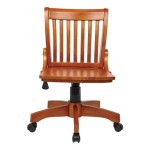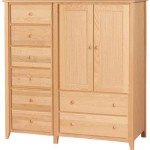How To Start A Worm Farm For Fishing
Starting a worm farm for fishing can yield significant benefits, including a steady supply of bait, reduced costs, and the satisfaction of cultivating your own worms. Understanding the essential aspects of starting a worm farm is crucial for a successful venture, encompassing factors like choosing the type of worms, preparing the bedding, feeding and maintaining the worms, and harvesting bait. This article will delve into the nuances of each aspect, providing a comprehensive guide to establish a thriving worm farm for fishing endeavors.
Choosing the Right Worms
Selecting the species of worm best suited for fishing is paramount. Red wigglers (Eisenia fetida) and African nightcrawlers (Eudrilus eugeniae) are popular choices due to their size, durability, and abundance. Red wigglers excel in smaller containers, while African nightcrawlers thrive in larger setups. Consider the specific fishing techniques and target species when selecting the worm variety.
Preparing the Bedding
The bedding material provides a suitable environment for worm habitation and reproduction. Peat moss, shredded newspaper, and cardboard are commonly used for their moisture retention and aeration properties. Avoid materials like sawdust or grass clippings, which can compact and create an unhealthy environment. Ensure the bedding is sufficiently moist but not waterlogged, maintaining a balance that allows for worm movement and respiration.
Feeding and Maintaining Worms
Feeding worms an appropriate diet is essential for their growth and bait quality. Vegetable scraps, fruit peels, coffee grounds, and torn cardboard serve as suitable food sources. Avoid feeding meat or dairy products, which can attract pests and disrupt the ecosystem. Regularly add bedding material as the worms consume food, maintaining a balanced environment. Proper ventilation and temperature control are also crucial for worm well-being. An ideal temperature range is between 55-75°F (13-24°C).
Harvesting Bait
Harvesting fishing bait from a worm farm requires patience and care. Avoid disturbing the worm population by leaving the baiting area undisturbed for at least a week. Use a light source or flashlight to attract worms to the surface, making them easier to collect. Select worms of the desired size and species, ensuring they are lively and free from imperfections. Proper handling and storage techniques will preserve the bait's quality and longevity.
Conclusion
Starting a worm farm for fishing involves a multifaceted approach encompassing worm selection, bedding preparation, feeding and maintenance, and bait harvesting. By adhering to the essential aspects outlined in this article, you can establish a thriving worm farm that provides a reliable source of bait, reduces costs, and enhances your fishing experiences.

How To Grow Your Own Fishing Worms 11 Steps With Pictures

A Worm Farm For Fishing To Breed Your Own Bait Worms

Redworm Farming Backwoods Home

How To Grow Your Own Fishing Worms 11 Steps With Pictures

Diy Worm Composting Bin How To Do It Right Uncle Jims Farm

Introduction To Worm Farming Working Worms Vermiculture

Worms Are A Great Bait For Catching Fish But Box After Can Add Up To Lot Of Wasted Money This Will Be Step By Easy

How To Build A Worm Farm Modern Farmer

Home Made Diy Worm Farm For Fishing

How To Grow Your Own Fishing Worms 11 Steps With Pictures








